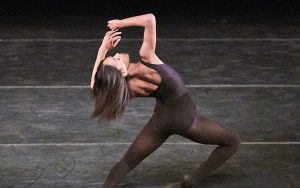 Photo courtesy of RDA
Photo courtesy of RDA
It seems like ages since I stood on the stage of the NY Metropolitan Opera House at Lincoln Center with my dear friend, Kevin McKenzie, director of American Ballet Theatre, watching a rehearsal of ABT’s Swan Lake. Yet it was only 14 months ago. But very much has changed–especially in the world of Ballet.
Most ballet companies have taken to presenting digital performances.
I decided to create an entirely Zoom virtual Ballet for Sierra Nevada Ballet to the beautiful music of Milton Williams. Little did I realize how challenging that would be.
There was the fact that each dancer had a small –yet very different space to dance and used different cameras-some dancers had computers and some had iPhones or iPads. Some had good internet connections, and some did not. With all this in mind, it would have been smarter and easier to use each dancer alone, but I wanted to show a corps (or group) movement.
The small space issue was the easiest to tackle because (after many choreographic experiments) I determined that no matter how much I wanted to create complex movement, the dancer’s space was limited to two steps forward and two steps backward. My challenge was to create something expressive and yet limited in movement. I was fortunate (for the pas de deux section) to have Erica Chipp and Oliver Adams who are married and could dance together in a larger space- their dance studio in Minden.
After completing the choreography, I asked each dancer to video themselves and send the individual videos to me. I naively assumed that we could just edit the dancers’ videos together and that all would work perfectly. But after Lyric Burt (of TL Solutions) and I spent over 20 hours of editing this short piece, we realized that each dancer had used a different camera which made it nearly impossible for them to move on film exactly at the same time to the music. Though the end product is not as perfect as we would have liked, we are pleased with SNB’s first entirely virtual production, I Could Do Anything and Pas De Deux.
In the event that large performance venues remain closed for a long period of time, the art of ballet will need to morph for a time into an entirely digital art form and will need to charge a viewing fee in order to pay the dancers, choreographers and editors.
I was asked to teach a virtual Master Ballet Class for the Regional Dance America National Choreography Intensive (providing a one-of-a kind experience for choreographers to explore their craft and for dancers to study in a variety of dance styles with diverse choreographers). I spoke briefly about the challenge of creating digital ballet with Erika Davis, the Chief Executive Officer.
She explained how difficult it is having dancers from all across the US who do not know each other working virtually together with a choreographer who they can only see on Zoom. “This is the first time in 59 years that RDA has taken the NCI program online, and for many participants, it’s the first time making a dance piece for film-virtually at a distance, “Erika said. “We are learning so much in this new space, and the dancers and choreographers are really enjoying the experience.”
There are already many new digital ballet creations out there online, and some are quite creatively brilliant. Four of my favorites are: Swans For Relief (the beautiful piece danced by ballerinas from all over the world, created by Misty Copeland and Joseph Phillips) to help fund dancers salaries; the very moving Buked by Alvin Ailey American Dance Theater; Bathtub Swan Lake (conceived and innovatively executed by Corey Baker), and the very funny Wilis in Corps-in-tine by the Australian Ballet.
Alaine Haubert (Director of the ABT William Gillespie School in CA) is my good friend and always seems to take a positive path in life. I asked Alaine about her vision for Ballet in 2020 and 2021. “We need to re-think the mission of the art form.” She told me. “ We need to see it as not only a performing art but as an inner exploration of both the individual and collective spirit which is true artistic expression. Dancers, teachers, and students must go deep within and relate to one another at a level that transcends distances. Ballet is a universal art form and through it we can all join together as one- no matter the venue.”
Whether digital or live, we are responsible for the future of arts education and ballet touches the soul and that is why the art form is resilient and will always have a valued place in people’s lives.
See Sierra Nevada Ballet’s I Could Do Anything and Pas deux as part of SNB’s Dancing By The River-Still Dancing and SNB’s 2012 full length production of Giselle on the SNB website, www.sierranevadaballet.org. For more information about Sierra Nevada Ballet and the SNB Academy, visit the SNB website.
